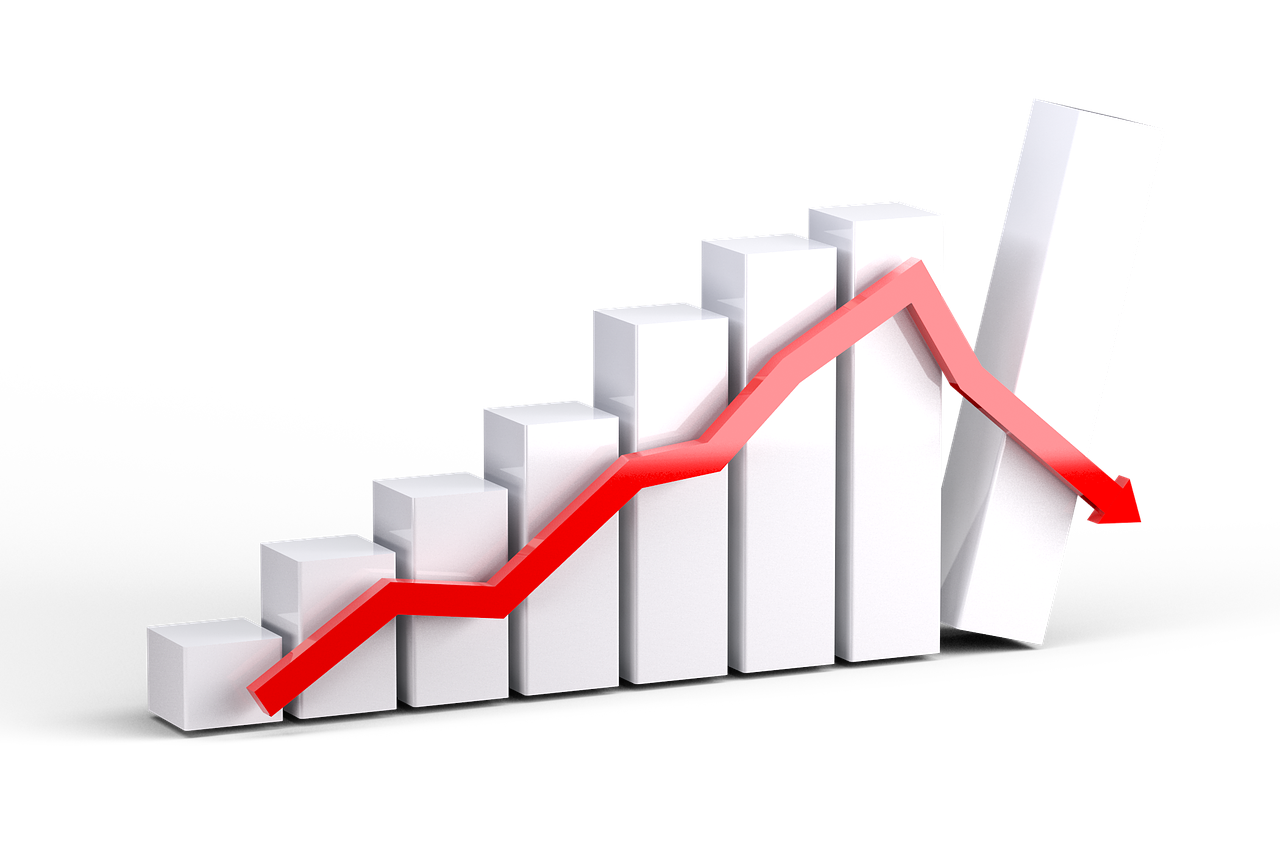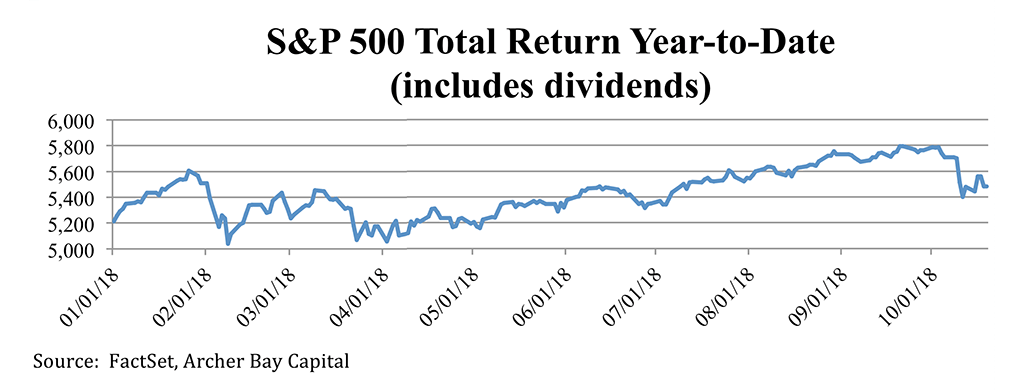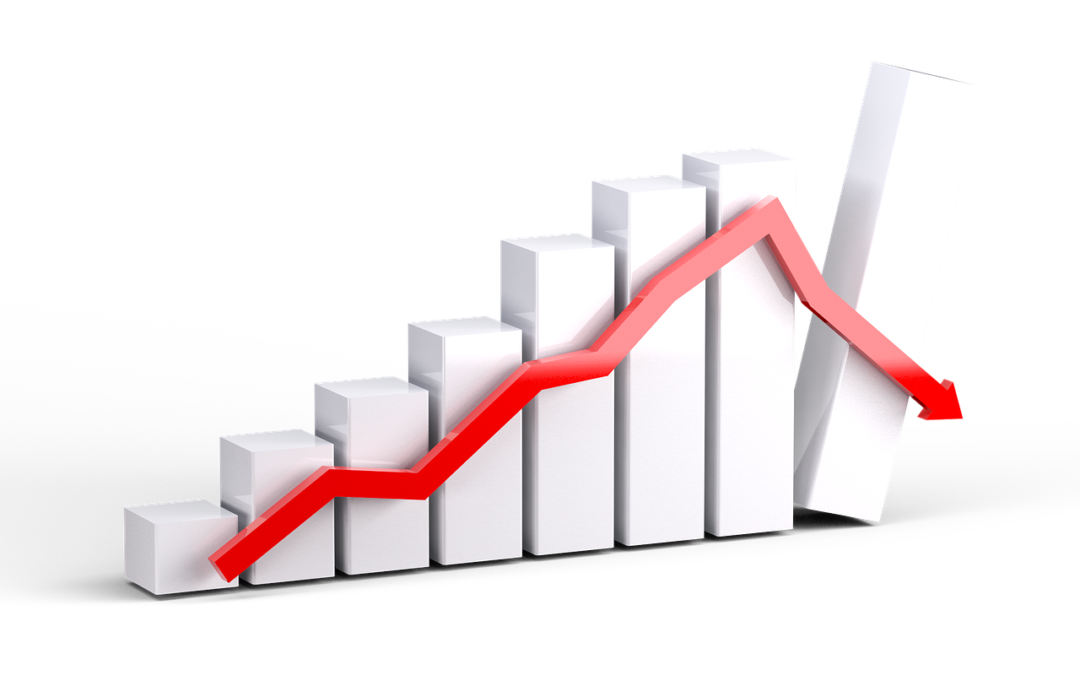Login
Stock Market Volatility: Keeping an Eye on Corporate Earnings

It has been a tumultuous year in the stock market and if you only read the business headlines or watch CNBC, you would think that the market is down for the year. But since the beginning of 2018, the S&P 500 has returned 5.15% (as of last Friday) which is better than the bond market or cash.

It is a good time to keep perspective by taking a closer look at recent market volatility and what it means for your portfolio.
Following strong performance in 2017, the market continued moving up through the fourth quarter and into early January. The corporate tax cuts helped increase corporate earnings estimates by more than twenty percent. But concerns over the market going too far — and too fast — pulled the market down ten percent from January 26th to February 8th.
After bouncing around for the next few months, the markets finally exceeded the January 26th peak in late July and kept climbing. By October 3rd, the market return for the year reached eleven percent. It then fell almost seven percent and now is back up slightly, hence the 5.15% total return year-to-date that I mentioned above.
Why the volatility? What has changed since January?
We know that the dollar is up in value, unemployment is down, trade uncertainty due to tariffs and counter-tariffs is causing concern, and inflation and bond yields are up.
Unfortunately, stock market corrections of ten percent are unpredictable and unforecastable. Fortunately, they ten to reverse relatively quickly too — in weeks and months and not years. Correctly timing an exit and entry into the stock market is impossible, so we monitor what we can track, which is the trend in corporate earnings. Wall Street analysts provide earnings forecasts for each company in the S&P500 and we track the periodic changes to those forecasts for insight into the market's direction.
Corporate earnings and stock market prices
The stock market has historically been highly correlated with corporate earnings (80-85 percent). And we know that bear markets, when markets decline twenty percent or more, happen most frequently during recessions when corporate earnings also decline. Currently, earnings are strong and earnings growth is expected to be strong in 2019. The economy is expanding and there are no signs of recession.
Appendix 1: S&P Earnings by Economic Sector, 2018 and 2019
|
Earnings Growth by Sector |
2018 estimate |
2019 estimate |
|
Consumer Discretionary |
17.8% |
11.4% |
|
Consumer Staples |
9.8% |
5.9% |
|
Energy |
95.4% |
29.4% |
|
Financial |
31.8% |
9.5% |
|
Healthcare |
14.7% |
8.3% |
|
Industrials |
22.8% |
11.8% |
|
Materials |
27.4% |
6.4% |
|
Real Estate |
5.2% |
6.1% |
|
Technology |
22.9% |
8.4% |
|
Communications |
21.0% |
11.1% |
|
Utilities |
6.7% |
5.4% |
|
Total S&P 500 |
23.1% |
10.2% |
Source: Thomson Reuters, 10/22/2018 Earnings Scorecard
We view this year’s stock market gyrations as normal market volatility as we keep an eye on earnings and the economy. At some point, we will have another recession and a bear market. However, as the low unemployment rate keeps consumer spending up — and with corporate profit margins and earnings strong — we don’t see a recession risk heading into 2019. In the context of the stock market volatility we've experienced in 2018, we believe that the relationship between corporate earnings and stock market prices will continue.
Understand how your portfolio is affected by stock market volatility
At Archer Bay Capital, we believe that financial education can help individuals achieve financial independence. We work with you to build a personal financial plan that supports your goals for the long term. Contact us to learn more about stock market volatility and what it means for your portfolio, or to set up a consultation today.



